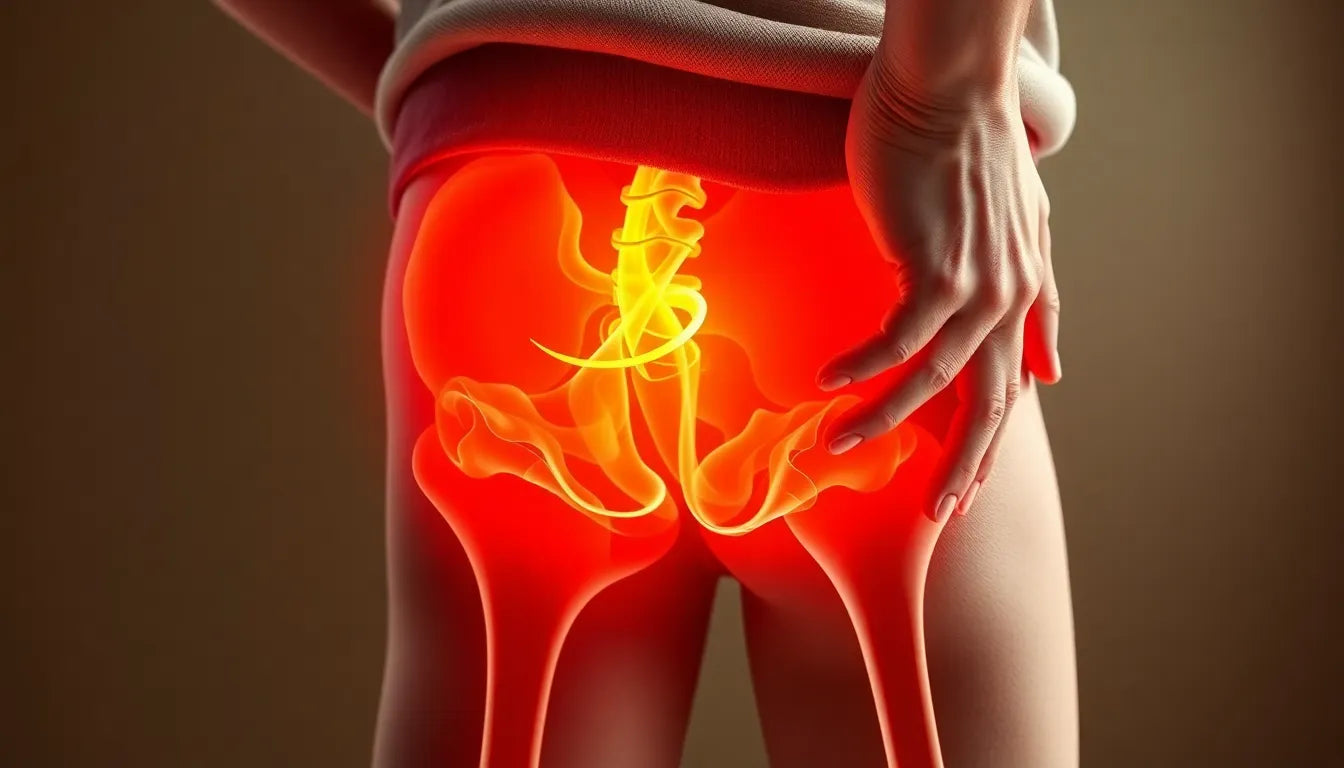When we think about the spine, our minds often jump to the neck or lower back, but nestled quietly in between lies the thoracic spine. This often-overlooked middle section of the backbone plays a crucial role in maintaining our posture and protecting vital organs. Understanding its significance can be a game-changer when it comes to living a pain-free life.
understanding the thoracic spine
The thoracic spine is located between the cervical spine (the neck) and the lumbar spine (the lower back). It consists of 12 vertebrae, labeled T1 through T12, which form a gentle curve from the base of the neck down to the lower back. This region is unique due to its connection with the rib cage, providing structural integrity and limiting the range of motion compared to other parts of the spine.
Each vertebra in the thoracic spine is designed to support the upper body while protecting the spinal cord. The thoracic vertebrae articulate with the ribs, forming costovertebral joints that help stabilize the spine and safeguard vital organs like the heart and lungs. This protective feature is pivotal, as it shields these organs from potential harm.
the importance of the thoracic spine
Understanding the thoracic spine is essential for anyone seeking a pain-free lifestyle. Its primary role is to provide stability to the upper body and maintain an upright posture. The rib attachments limit excessive movement, which helps in protecting the spinal cord and internal organs from injury. This limited movement might seem restrictive, but it is crucial for ensuring that vital structures are well-protected.
Moreover, the thoracic spine contributes significantly to the body's overall stability. Its rigid structure supports the upper body and helps distribute weight evenly, reducing the strain on other parts of the spine. This is why maintaining the health of the thoracic spine is integral to preventing back pain and ensuring overall well-being.
purpose of this post
This blog post aims to unlock the secrets of your thoracic spine, providing insights into its anatomy, functions, and the common conditions that can affect it. We will explore how to prevent issues related to this vital part of your backbone, offering practical advice and tips to maintain a healthy, pain-free life. By understanding the thoracic spine better, you can take proactive steps to protect it and, in turn, safeguard your overall health and mobility.
anatomical structure of the thoracic spine
The thoracic spine is a marvel of structural engineering within the human body, designed to balance flexibility and protection. Each of the 12 thoracic vertebrae is composed of several key elements. The vertebral body bears most of the weight, while the vertebral arch forms the canal through which the spinal cord passes. Additionally, the spinous and transverse processes serve as crucial attachment points for muscles and ligaments, which aid in movement and stability.
Between each vertebra lies an intervertebral disc, acting as a shock absorber. These discs are vital for maintaining spine flexibility and health, allowing for slight movements while preventing vertebrae from grinding against each other. The thoracic spine's unique feature is its articulation with the ribs at the costovertebral joints, which provides structural integrity and limits the range of motion to protect vital organs.

functions of the thoracic spine
The thoracic spine plays several pivotal roles in the human body. Its structure is integral to maintaining stability and posture. The rib attachments contribute to a rigid framework that helps keep the body upright, distributing the weight of the upper body evenly and reducing the strain on other parts of the spine.
Beyond stability, the thoracic spine serves a protective function. It acts as a shield for the spinal cord and internal organs such as the heart and lungs. This protective quality is crucial, given the vital nature of these organs. While the thoracic spine allows limited movement, this restriction is a protective measure to prevent injury to these essential structures.
Despite its limited range of motion, the thoracic spine does allow for some degree of rotation and flexion/extension. This controlled movement is essential for various daily activities, ensuring that the spine remains functional without compromising the protection of the organs it safeguards.
common conditions affecting the thoracic spine
The thoracic spine, like any other part of the body, is susceptible to certain conditions that can lead to discomfort or pain. Common conditions include compression fractures, often due to osteoporosis, which can lead to a hunched posture and chronic pain. Kyphosis, an exaggerated forward curvature, and scoliosis, a lateral curvature, are also prevalent, particularly in adolescents and older adults.
Herniated discs in the thoracic region, though less common than in the lumbar area, can cause significant discomfort and neurological symptoms if they press on the spinal cord. Degenerative disc disease, a natural part of aging, can lead to pain and reduced mobility in the thoracic spine.
| Condition | Symptoms | Potential Causes |
|---|---|---|
| Compression Fractures | Back pain, height loss, hunched posture | Osteoporosis, trauma |
| Kyphosis | Rounded back, back pain | Degenerative diseases, poor posture |
| Scoliosis | Uneven shoulders, back pain | Genetic factors, growth spurts |
| Herniated Discs | Back pain, neurological symptoms | Aging, injury |
| Degenerative Disc Disease | Chronic pain, stiffness | Age-related wear and tear |
Understanding these conditions and their symptoms is the first step in seeking effective treatment and maintaining a healthy thoracic spine. By recognizing the signs early, individuals can take proactive measures to manage or prevent these issues, ensuring a pain-free and active lifestyle.
treatment and prevention of thoracic spine issues
Maintaining the health of your thoracic spine is crucial for a pain-free life. Several conservative care options are available to manage and prevent issues related to this vital part of your backbone. Physical therapy is often recommended to strengthen the muscles supporting the spine, improve posture, and increase flexibility. Regular sessions with a physiotherapist can help tailor exercises that specifically target the thoracic region, offering relief from pain and preventing future injuries.

Women's Posture Shirt™ - Black
Patented shirt supports muscles and improves posture for work and daily activity.
Posture correction plays a significant role in thoracic spine health. Simple adjustments in daily habits, such as sitting up straight and using supportive chairs, can alleviate strain on the spine. Additionally, investing in a supportive mattress can ensure proper spinal alignment during sleep, further reducing the risk of developing spine-related issues.
Strengthening exercises are essential for maintaining thoracic spine health. Incorporating routines that focus on core strength can help support the spine and improve overall posture. Exercises like planks, seated rows, and thoracic extensions are particularly beneficial. Bracing and medication may also be prescribed in some cases to manage pain and inflammation, but these should be used under the guidance of a healthcare professional.
practical tips for thoracic spine health
To prevent thoracic spine issues, it's important to engage in regular exercise and maintain good posture. Incorporating stretching routines into your daily schedule can enhance flexibility and reduce muscle tension. Stretches such as cat-cow, thoracic twists, and shoulder blade squeezes can be particularly effective in keeping the thoracic region supple and pain-free.
Focusing on bone health is another critical preventive measure. Ensuring adequate intake of vitamin D and calcium can strengthen bones, reducing the risk of conditions like osteoporosis that often lead to thoracic spine problems. Ergonomic habits, such as adjusting your workspace to promote a neutral spine position, can also mitigate strain on the thoracic region.
Ergonomic aids, such as those offered by Anodyne, can provide additional support for maintaining thoracic spine health. Products like ergonomic chairs and back supports are designed to promote proper posture and alleviate pressure on the spine, making them excellent investments for anyone seeking to prevent thoracic spine issues.

Men's Posture Shirt™ - Black
Patented shirt activates muscles and helps relieve back, shoulder, and neck pain.
frequently asked questions
what is the thoracic spine and why is it important?
The thoracic spine is the middle section of the spine, consisting of 12 vertebrae. It plays a crucial role in providing stability, protecting vital organs, and maintaining posture.
what are common causes of thoracic spine pain?
Poor posture, prolonged computer use, inactivity, and medical conditions such as scoliosis or kyphosis can lead to thoracic spine pain.
how can I prevent thoracic spine issues?
Preventive measures include regular exercise, maintaining good posture, using ergonomic support, and focusing on bone health through adequate vitamin D and calcium intake.
when should I seek medical advice for thoracic spine pain?
Consult a healthcare professional if you experience persistent pain, neurological symptoms, or significant functional impairment in the thoracic region.
Källor
- Hinge Health. "Thoracic Spine."
- Ospina Medical. "Thoracic Spine 101: Anatomy, Functions, and Treatments for a Healthy Back."
- Milwaukee Orthopaedics. "Thoracic Spine Anatomy."
- YouTube. "Thoracic Spine Anatomy."
- Eagle Therapy. "Thoracic Spine Anatomy."
- Don Park MD. "Thoracic Spine Anatomy."
- TeachMeAnatomy. "Thoracic Spine."
- NCBI. "Thoracic Vertebrae."
- University of Maryland Medical Center. "Spine Anatomy and Function."
- University of Rochester Medical Center. "Thoracic Spine."
- Spine Health. "Spine Anatomy."
- Radiopaedia. "Thoracic Spine."


















